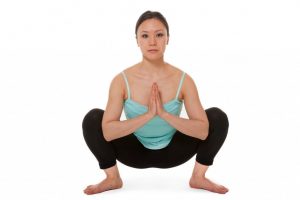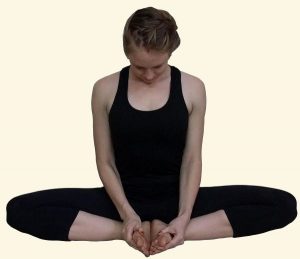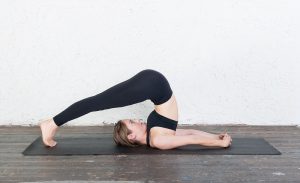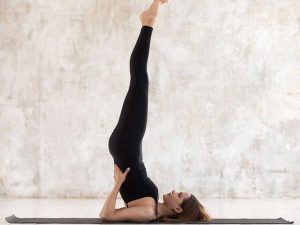PILES – YOGA ASANAS
- December 20, 2022
- Posted by Dr. Vaidya Karanvir Singh
- 0 Comment(s)
Piles is another name for hemorrhoids. Hemorrhoids are swelling containing enlarged blood vessels that are found inside or around the rectum and anus. The swelling can cause localized inflammation of other tissues.
WHAT ARE THE CAUSES OF PILES ?
There are several causes that contribute to development of piles. These causes increase pressure on blood vessels which supply to rectum and anus thus causing the vessels to swell.
- Lifting heavy weight
- Chronic constipation
- Chronic diarrhea
- Family history
- Rectal cancers
- Being over weight
- Prolonged sitting on toilet
- Straining during bowel movement
- Low- fiber diet
- Pregnancy
- Spinal cord injury
- Persistent cough or vomiting
WHAT ARE THE RISK FACTORS OF PILES ?
- Alcoholic liver disease
- elevated anal resting pressure
- Episiotomy
- Surgery related to anal canal or rectum
- Loss of tone of rectus muscle
- Inflammatory bowel disease
WHAT ARE THE TYPES OF PILES ?
Piles is divide into 2 types on the bases of their location. The types are :
- INTERNAL PILES : These are located between 2 to 4 cm above the opening of anus. They are generally painless as there are less pain sensing nerves in rectum. They are not usually visible during external examination. They are also know as prolapsed hemorrhoids.
- EXTERNAL PILES : These are small lumps on outside edge of anus. They are itchy and tends to become painful if blood clot is developed there. They require immediate medical treatment if clot is developed.
GRADES OF PILES :
There are four grades of Piles:
- Grade 1 : Small inflammation , usually inside the lining of anus . They does not cause symptoms and do not protrude out of anus.
- Grade 2 : Are large in size then grade 1 . they also remain inside anus but may protrude out during passing stool and return inside independently.
- Grade 3 :They protrude through anus during straining. But only return with manual intervention.
- Grade 4 : They remains prolapsed outside the anus and can’t be push back even with manual intervention.
WHAT ARE THE SYMPTOMS OF PILES ?
Some of the common symptoms are :
- Painful lump around and in the anus
- Discomfort and itching around anus
- Bloody stool
- Fecal incontinence
- Inability to control bowel movement
- Anal fistula
- Pain or discomfort while sitting
AYURVEDIC APPROACH :
It can be correlated with Arshas in ayurveda . Nidan sevan like excessive intake of dry, pungent, cold food , unwholesome food, prolonged fasting, day sleep , excess of exercise etc lead to vitiation of doshas ( vata, pitta and kapha) . The aggravated dosha contaminates the twak, mamsa and meda which leads to formation of mamsa ankuras at the opening of anus . These mamsa ankuras obstructs the pathway and cause trouble .
YOGA ASANAS :
- MALASANA (GARLAND POSE) : It is helpful in restoration of digestive system as it stretch and contract all the muscles involved in digestive process.
STEPS :
- Stand straight with legs apart and slowly squat without bending forward.
- Keep the spine straight as you descend.
- Bend the knees slowly keeping feet straight and toes pointing forward .
- When you are in full squat fold hands in front of body with palms touching.
- Hold the pose for3-4 minutes keeping the breath steady.
- Slowly rest the hips on the ground and relax.
PRECAUTIONS :
- Lower back pain
- Knee or hip injury
- Hernia
- High blood pressure
- Cervical problem
- BADDHA KONASANA (BOUND ANGLE POSE) : It helps to strengthen inner thighs ,knees and make them more flexible. It helps to energize gastrointestinal organs and relieves any digestive distress.
STEPS :
- Sit down on ground with back straight and relaxed shoulders.
- Start bending your knees slowly while bringing your feet together so soles of both feet are touching.
- Move the heels toward pelvis as close as your comfortable and hold the toes with both hands to provide support.
- Start flapping your legs like butterfly wings while taking deep breaths.
- Do as many time as you can and then gradually return to sitting position.
PRECAUTIONS :
- Knee , neck or hip injury
- Lower back pain
- Sciatic pain
- Pregnancy
- Spondylitis
- Menstrual cycle
- HALASANA (PLOUGH POSE) : It improve circulation of blood in abdomen and anus so helps to regulate digestive system .
STEPS :
- Lie down on your back with hands by your side and palms facing downward.
- Inhale and slowly lifting your feet off the ground using abdominal muscles raising leg to make 90 degree angle .
- Continue to take normal breaths while supporting your hips and back with your hands and lift them off the ground.
- Gently sweep your legs over the head till yours touches the ground behind your head
- Keep your back in perpendicular angle with the ground.
- Hold the pose for a minute and slowly return to initial position .
PRECAUTIONS :
- Asthma
- High blood pressure
- Menstrual cycle
- Pregnancy
- Diarrhea
- Heart Condition
- Neck or back injury
- SARVANG ASANA (SHOULDER STAND) :It also helps to regulate the digestive system by improving blood circulation in abdominal area.
STEPS :
- Lie down on your back and with hands by side.
- Lift your legs , hips and back slowly so that you come up high on your shoulders.
- Then place the elbows in such a position that it supports your body weight. But make sure your weight is not on neck and head as it can lead to injury
- Point outer part of sole outwards and tighten muscles
- Hold the posture for 30-60 seconds and then slowly return to resting position.
PRECAUTIONS :
- Menstrual cycle
- Neck or shoulder injury
- High blood pressure
- Headache
- Pregnancy
- Diarrhea

Dr. Vaidya Karanvir Singh is the younger Vaidya in Chandigarh Ayurved & Panchakarma Centre. He is the fourth generation in his family who is practicing as a general consultant in Ayurved & Panchakarma treatment at Chandigarh. In his practice, he had treated more than 1 Lakh Plus patients worldwide.





